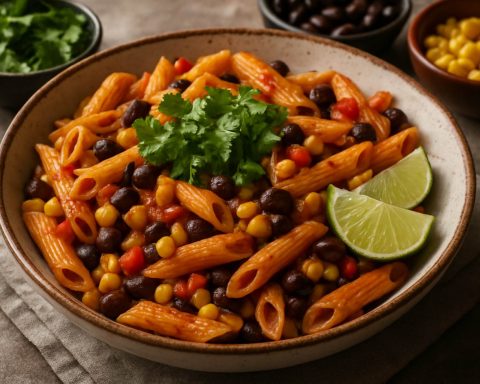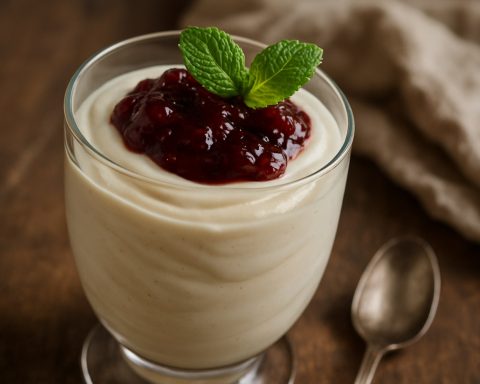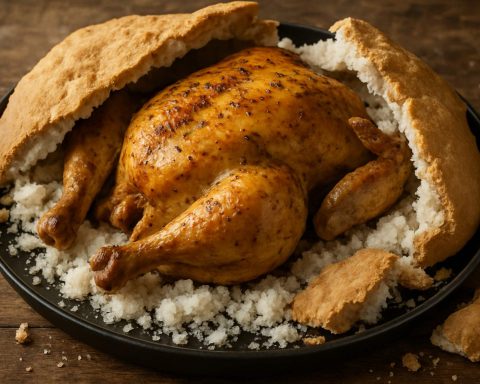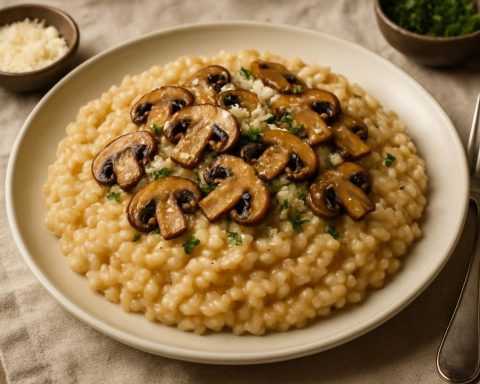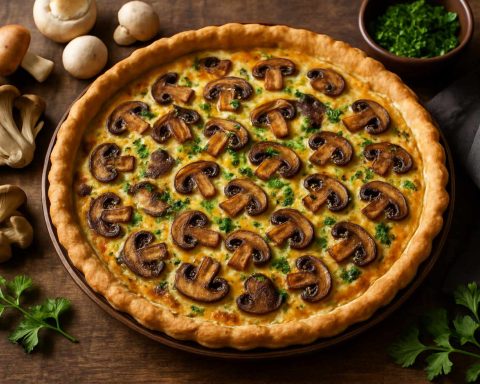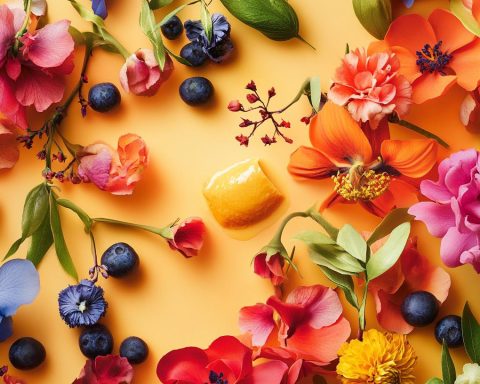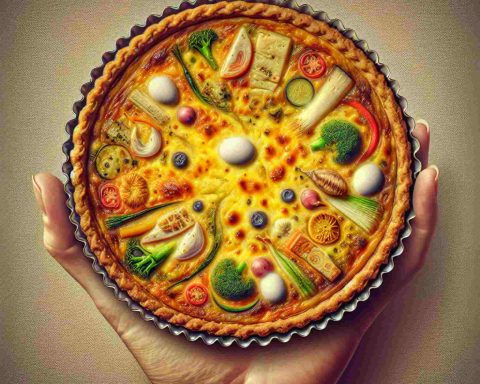Georgian cuisine is a beautiful blend of flavors and traditions, and among its treasures is the delightful ‘foto di pane.’ Also known as Lavash or Shoti, this traditional flatbread is more than just a staple at Georgian tables; it’s a piece of the country’s rich culture. The bread, characterized by its thin, crisp edges and soft interior, is often served at celebrations, family gatherings, and daily meals, making it a versatile companion for a variety of dishes.
Ingredients:
– 1 kg of all-purpose flour
– 600 ml of warm water
– 1 tablespoon of dry yeast
– 1 tablespoon of salt
– 1 teaspoon of sugar
Instructions:
1. Activate the Yeast: In a small bowl, mix 100 ml of the warm water with the sugar and yeast. Stir gently and let it sit for 5-10 minutes until frothy.
2. Prepare the Dough: In a large bowl, combine the flour and salt. Create a well in the center and add the yeast mixture. Gradually pour in the remaining water, mixing until a rough dough forms.
3. Knead: Transfer the dough to a floured surface and knead for about 10 minutes until smooth and elastic.
4. First Rise: Place the dough in a lightly oiled bowl, cover with a damp cloth, and let it rise in a warm place for about 1-2 hours, or until doubled in size.
5. Shape: Preheat your oven to 240°C (465°F). Punch down the dough and divide it into small portions. Roll out each portion into an oval shape.
6. Bake: Transfer the dough to a baking sheet and bake for 10-12 minutes until golden brown.
7. Serve: Allow to cool slightly on a wire rack. Serve warm with cheese, meats, or dips for the perfect Georgian experience.
Exploring the Health Benefits of Georgian ‘Foto di Pane’: A Culinary Delight
Georgian cuisine has long been celebrated for its rich diversity and intricate flavors. Among its culinary treasures is the cherished ‘foto di pane,’ also known as Lavash or Shoti. This traditional flatbread is not just a fundamental element at Georgian tables but also an emblem of the country’s abundant heritage. Notably characterized by its thin, crisp edges and a soft, inviting interior, this bread is a versatile delight, making appearances at festive occasions, family gatherings, and as a daily staple. Delving into the ingredients and preparation of this beloved dish uncovers not only its cultural significance but also an array of health benefits.
The Wholesome Ingredients and Their Health Benefits
1. All-Purpose Flour:
All-purpose flour provides the foundational structure for Lavash and is a staple in many recipes. It is a good source of carbohydrates, which supply the body with energy. Moreover, flour is enriched with essential B vitamins, such as folate, niacin, and thiamine, which play vital roles in energy metabolism and maintaining healthy skin and nerves. While consuming whole grain alternatives could further enhance nutritional content, balancing traditional all-purpose flour dishes with a varied diet ensures nutritional diversity.
2. Warm Water:
Water is a vital component in this recipe, facilitating the activation of yeast and binding the dough components together. Hydration is fundamental to all physiological functions, and incorporating water-rich foods contributes to maintaining optimal hydration levels within the body, aiding digestion and nutrient transport.
3. Dry Yeast:
Yeast is the living component bringing Lavash to life. As it ferments, yeast enriches the bread with a unique flavor profile and improves its digestibility. Fermentation increases the availability of nutrients and may also produce beneficial compounds, such as B-vitamins and certain amino acids. Additionally, the process of fermentation helps create a softer texture that is easier on the digestive system.
4. Salt:
While excessive salt intake is a concern, moderate use in bread-making brings flavor enhancement and aids in gluten strengthening. Salt also regulates yeast fermentation, ensuring consistent texture and flavor in the bread. Maintaining the right balance of sodium is essential for nerve function and fluid balance in the body.
5. Sugar:
A small amount of sugar is used primarily to activate the yeast. During fermentation, yeast consumes the sugar and produces carbon dioxide, which helps the dough rise. While sugar should be consumed in moderation, its role in this process is to enhance yeast activity rather than increase sugar content in the final product.
Healthful Cooking Method
The preparation of Lavash with its kneading and baking steps not only serves to create a delightful texture but also involves a technique that eliminates the need for excess oils, making it a low-fat option. Baking at high temperatures does encourage a caramelized exterior, lending the bread its characteristic golden color and enhancing its crispiness.
Cultural and Nutritional Fusion
Lavash, when paired with cheese, meats, or dips, as traditionally served, offers a balanced meal with added proteins and healthy fats, fostering a harmonious blend of nutrients. The cultural practice of sharing bread at meals promotes community and a greater appreciation for intake moderation.
Embracing Lavash as part of a thoughtful and varied diet presents a delightful way to enjoy a rich culinary tradition while benefiting from its wholesome ingredients, thus bridging cultural heritage with mindful eating.
The Cultural and Culinary Significance of Georgian Lavash: A Bread Beyond Borders
Georgian cuisine is renowned for its unique blend of flavors and traditions. A standout within this rich gastronomic heritage is the country’s traditional flatbread, often referred to as ‘foto di pane,’ more commonly known as Lavash or Shoti. This cherished bread offers both a taste of Georgia and insight into its cultural tapestry.
Feature and Versatility of Lavash
Lavash is celebrated for its mixture of textures; thin, crispy edges with a soft, chewy interior. It’s a staple at Georgian gatherings such as celebrations and family meals but is equally enjoyed as a daily accompaniment. Its versatility makes it the perfect partner to Georgian dishes, enhancing the dining experience.
New Trends: Lavash in Modern Cuisine
Recently, there has been a growing trend of incorporating Lavash into international and fusion cuisines. Chefs around the world experiment with Lavash, using it as pizza bases, tortilla alternatives in wraps, and even as gourmet sandwich material. This adaptability has allowed Lavash to transcend its traditional Georgian roots, gaining international acclaim and usage.
Sustainability Aspects of Lavash
Making Lavash aligns with sustainable cooking practices. The simple, natural ingredients—flour, water, yeast, salt, and sugar—ensure the bread has a minimal environmental footprint. Furthermore, its production can often be localized, supporting community agriculture and reducing transportation emissions.
The Limitations of Traditional Baking
While rich in tradition, baking Lavash the traditional way can present challenges. The authentic method usually requires a tandoori-style clay oven called a “tone,” which may not be feasible in modern home kitchens. However, modern adaptations, as described in the simple home-baking tutorial, allow wider access without compromising much on the authentic taste.
Innovations and Predictions
Innovative approaches in the culinary world have seen the development of gluten-free and vegan Lavash variants, catering to dietary restrictions while maintaining the essential characteristics of the bread. Looking ahead, there is potential for Lavash to influence the formulation of new baked goods globally, continuing to push the envelope in both traditional and contemporary cuisine settings.
For more insights into Georgian cuisine and cultural highlights, visit the official tourism portal of Georgia.

